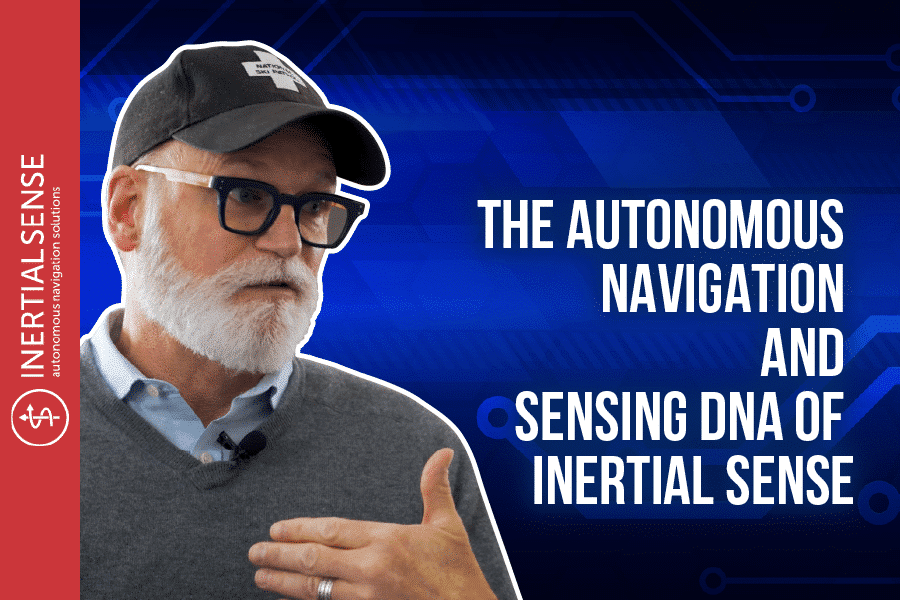
The Autonomous Navigation And Sensing DNA Of Inertial Sense
You want to invest in autonomous navigation tech and you need the best software and hardware. So why should you go with Inertial Sense? Watch this video to learn a little about what Inertial Sense can offer when it comes to our autonomous navigation and sensing DNA.
Inertial Sense not only wants to teach, but we collaborate and partner with other companies, forming a business relationship that benefits both parties. With our knowledge and experience in sensors and autonomy, we ensure our customers get what they need at a price they can afford.
Let us help you get to market and start showcasing your products. Contact Inertial Sense today and speak with our knowledgeable experts on what works best for you!
Learn More:
Where Are Autonomous Robots Used? – The Market for Autonomous Robotics
What It Means To Be a Full-Stack Solution in Autonomous Robotics
Robotic Autonomy As-A-Service for Legacy Manufactures of Workhorse Robotic Vehicles
Video Transcript
Autonomous Navigation and Sensing DNA of Inertial Sense
It makes sense that it would be a challenge right now in the current economy job market landscape where highly skilled engineers and software people are, you know, pretty hard to find.
They are and for the most part, these very highly skilled engineers, I want to go work for a startup and they don’t want to go work for a large company because it’s just not the nature of the way they view themselves, and you know, we have access to that kind of domain talent right inside our office. So they don’t have to go out and hire anybody. They don’t have to hire full-time staff. We, it’s very much a close collaboration with the partner and it ends up being a very close business relationship where we end up sort of in a licensing agreement with them, which looks better on their financial books anyway. It’s a great win-win.
Actually, let’s talk about the talent here a little bit. I wouldn’t fit into that bucket but I am always continually impressed with like the quality and the backgrounds of some of our engineers.
Well, I think there’s, if I had to divide it into two buckets it would be sort of the navigation and the localization which is where am I and what does my environment look like. And then there’s the actual driving of the vehicle itself and responding to both known and unknown obstacles and to complete a mission and we’ve got a great blend of people along among both of those. Our DNA as a sensor company, for both localization and sensor fusion, is a perfect foundation to lead to our autonomy platform, and one of the reasons that companies do business with us is having that DNA in our background. So wow, you guys know how to build hardware, you know what sensor fusion is, you’ve built sensors before. Wow, that’s great, that’s a great foundation for them expanding into autonomy and using that as the foundation.
Right, and that kind of makes sense from the hardware perspective. We’re doing the sensors, the sensor hardware, and then the software for the navigation part of it, but we’re not doing any of the building a mower or building you know, some kind of robot-like that.
Right, and that’s not the business that we’re in. Now, if you look at these industries, there are startups within these industries that are building an entire robot from the ground up and you know, I think they’ll probably do well and they’ll get some of the market shares and those will probably be decent businesses. But these legacy manufacturers own about ninety-five percent of these markets and they’re not going to give ground very easily. So, we believe there is an incredible business in helping these legacy companies get autonomous vehicles to market, electrified autonomous vehicles to market as quickly as they possibly can. And that way they can either sort of you know, either marginalize these startups or at least have a competitive offering. So they can say, look we’re on top of this, we’ve got what you need.

